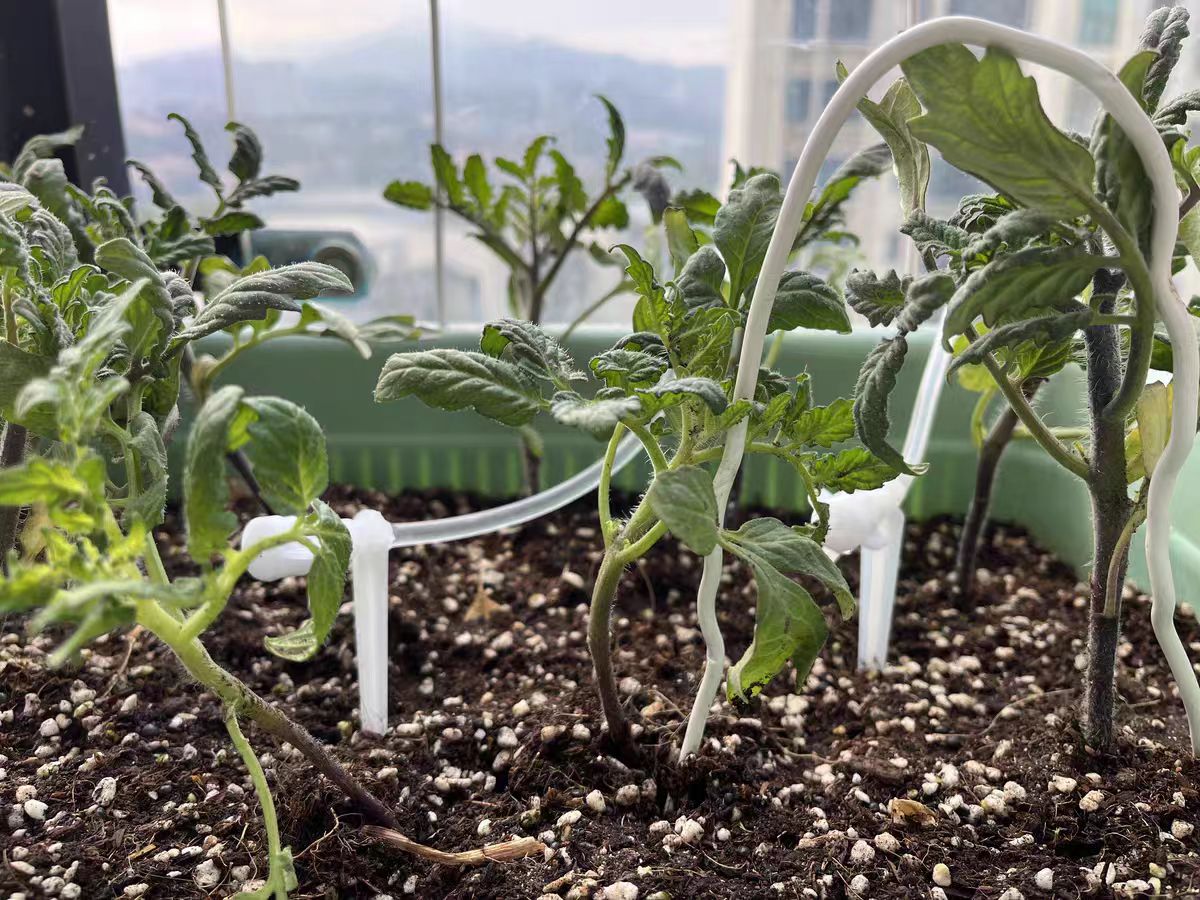When tomatoes start to bloom, can they be repotted? This is a question that many novice vegetable growers care about. We all know that the blooming stage is crucial for tomatoes. Originally, the plant allocates nutrients to leaf and stem growth, but now it needs to divert energy to flower and fruit development. Any disturbance during this period may affect its subsequent growth.
During the blooming stage, there is a delicate balance between the plant's underground roots and aboveground stems, leaves, and flowers. The roots continuously absorb water and nutrients from the soil and transport them to the stems, leaves, and flowers to support their growth. In turn, the aboveground parts feed back some nutrients to the roots through photosynthesis, allowing the roots to function properly. Tomatoes are highly sensitive to environmental changes during this period, and even a slight mistake can disrupt this balance, affecting their normal growth and development.
Repotting tomatoes while they are in bloom poses several risks. No matter how careful you are, it is difficult to avoid damaging the roots during repotting. The main roots, lateral roots, and fine capillary roots (resembling hair) are easily broken when the plant is removed from the old pot and soil. Injured roots cannot function as effectively, significantly reducing their ability to absorb water and nutrients. However, blooming tomatoes require substantial nutrients, so insufficient nutrition may cause flowers to wither and drop, hinder fruit set, and even lead to stunted growth of the entire plant, resulting in a much smaller harvest.
In addition to root damage, repotting exposes tomatoes to a new environment. The soil in the original pot has formed a microclimate suitable for tomato growth over time, including optimal pH, moisture, temperature, and beneficial microorganisms, which the plant has adapted to. Once repotted, the new soil may differ in these conditions, forcing the tomato to readapt. Moreover, changes in the plant’s placement can alter light and ventilation conditions, causing stress and disrupting its growth rhythm.
That said, repotting during the blooming stage is not entirely forbidden. If the pot is too small for root expansion, the soil is as hard as rock, or severe soil-borne pests/diseases threaten the plant, repotting becomes necessary. However, extreme caution is needed to minimize risks.
When repotting, transplant the plant with its original soil ball to reduce root damage as much as possible. Handle the plant gently—if the soil ball is fragile, wrap it in plastic wrap or newspaper. Choose a new pot only slightly larger than the original to avoid waterlogging (which can rot roots). Use loose, breathable, fertile, and well-draining soil, such as a mix of leaf mold, peat moss, perlite, and vermiculite.
After repotting, do not place the tomato in direct sunlight. Instead, move it to a shaded, ventilated area to recover. Water sparingly to keep the soil slightly moist. Once new leaves emerge, indicating the plant has adapted, gradually increase light exposure and resume normal care.
In summary, it is best to avoid repotting tomatoes during blooming due to the high risks of affecting flower and fruit development. If repotting is unavoidable, take protective measures and provide meticulous care to improve the plant’s survival rate and minimize impacts on blooming and fruiting.
Can Tomato Plants in Bloom Be Repotted?

Share with
Tagged in :




Leave a Reply